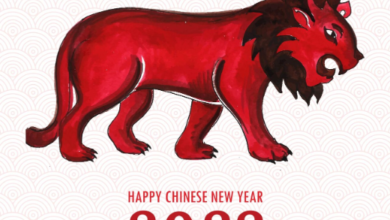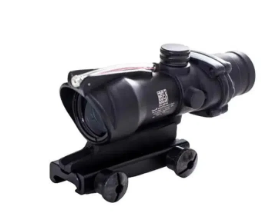What It Costs to Open a Candy Store Franchise: A Full BreakdownInitial Franchise Fees

Understanding the Upfront Franchise Fee
So, you’re thinking about opening a candy store franchise? Awesome! One of the first things you’ll need to wrap your head around is the initial franchise fee. This is basically the price of admission to the franchise family. It’s a one-time payment you make to the franchisor in exchange for the right to use their brand, operating system, and support. Think of it as buying a proven business model instead of starting from scratch.
This fee can vary wildly depending on the brand. A well-established, nationally recognized candy store franchise will likely have a higher upfront fee than a smaller, regional one. It covers things like the franchisor’s initial training, site selection assistance, and access to their proprietary recipes and processes. For example, if you wanted to know what is cookie monster ice cream, the franchise would provide you with the recipe and the process to make it.
Royalty Payments and Ongoing Contributions
Okay, so you’ve paid the initial franchise fee. Now what? Well, most franchises also require ongoing royalty payments. These are typically a percentage of your gross sales and are paid regularly (usually weekly or monthly). Think of it as a subscription fee for continued access to the brand’s support, marketing, and ongoing development. It’s how the franchisor makes money after the initial sale and how they keep the system running smoothly.
These royalties help the franchisor invest in things like new product development, marketing campaigns, and training programs. It’s a shared investment in the overall success of the franchise system. The percentage can vary, so make sure you understand the terms before signing on the dotted line.
Marketing Fund Allocations
Speaking of marketing, many franchises also have a marketing fund. This is a separate pool of money that franchisees contribute to, and it’s used for national or regional advertising campaigns, brand awareness initiatives, and other marketing efforts. The idea is that by pooling resources, franchisees can achieve greater marketing reach and impact than they could on their own.
Contribution to the marketing fund is usually a percentage of gross sales, similar to royalty payments. The franchisor is responsible for managing the fund and deciding how the money is spent. Transparency is key here, so you should ask for details on how the marketing fund is managed and what types of campaigns it supports. It’s important to know how your money is being used to promote the brand and drive traffic to your candy store franchise.
Training Program Charges
Before you even open your doors, you’ll likely need to complete a training program. This is where you and your key staff learn the ins and outs of running the franchise, from making the candy to managing inventory to providing customer service. The training program is designed to equip you with the knowledge and skills you need to succeed.
Some franchises include the cost of training in the initial franchise fee, while others charge a separate fee. The length and intensity of the training program can vary depending on the complexity of the business. It’s important to factor in the cost of training, as well as any travel or accommodation expenses, when budgeting for your franchise investment. A good training program is an investment in your future success, so don’t skimp on it.
Real Estate and Build-Out Expenses
Okay, so you’re dreaming of owning a candy store franchise. Beyond the sweet treats, you’ve gotta think about where you’re gonna set up shop. Real estate and build-out costs? They’re a big chunk of the investment. Let’s break it down.
Securing the Ideal Location
Finding the right spot is key. You want high foot traffic, good visibility, and a location that fits your brand. Think about it: a candy store franchise thrives where people are already strolling around, looking for a treat. Malls, downtown areas, and spots near schools are often prime real estate. But, of course, prime real estate comes with a price tag. Lease rates can vary wildly depending on location, size, and demand. Don’t forget to factor in things like parking availability and accessibility for customers with disabilities. These things matter!
Leasehold Improvements and Design
Once you’ve got the location, you’ll probably need to make some changes to the space. This is where leasehold improvements come in. This could involve anything from painting and flooring to installing new lighting and building out display areas. The design should be inviting and reflect the brand of your candy store franchise. Think bright colors, fun displays, and a layout that encourages customers to browse. Costs here can add up quickly, so get multiple quotes from contractors and be clear about your budget.
Permitting and Licensing Costs
Don’t forget about the paperwork! You’ll need various permits and licenses to operate your candy store franchise legally. This can include things like a business license, a food service permit, and maybe even a sign permit. The specific requirements will vary depending on your location, so do your research and get all your ducks in a row. These costs might seem small compared to the other expenses, but they’re essential and can cause major headaches if overlooked. Plus, you don’t want to end up like that time I tried to make what is cookie monster ice cream without a proper license, let’s just say it didn’t end well.
Inventory and Supply Chain Costs
One of the biggest ongoing expenses for any candy store franchise is, well, the candy! Getting your inventory right is super important, and it’s not just about stocking up on what you like. You need to think about what your customers want, how much to buy, and how to keep it all fresh.
Initial Candy Stock Procurement
Getting your initial candy stock right is crucial for a successful launch. You can’t just fill the shelves with whatever you feel like. You need a good mix of popular items, unique treats, and maybe even some local favorites. Think about different types of candy: chocolates, gummies, hard candies, novelty items, and seasonal treats. Also, consider dietary needs – sugar-free, gluten-free, and vegan options are becoming more popular. Don’t forget about display options either. You’ll need jars, bins, and shelving to showcase everything attractively. It’s a lot to think about, but getting it right from the start can make a big difference.
Supplier Relationships and Discounts
Building good relationships with your suppliers is key to keeping your costs down and your inventory stocked. Look for suppliers who offer competitive pricing, reliable delivery, and good quality products. Don’t be afraid to negotiate discounts, especially when buying in bulk. Some suppliers might also offer incentives for loyalty or early payments. It’s also a good idea to have backup suppliers in case your primary source runs out of something or has delivery issues. Diversifying your suppliers can protect you from disruptions and help you find better deals. For example, if you want to sell what is cookie monster ice cream, you need to find a supplier that can provide it.
Managing Seasonal Inventory Fluctuations
Candy sales definitely change throughout the year. Holidays like Halloween, Christmas, and Easter are huge for candy stores, but you also need to think about smaller events like Valentine’s Day and back-to-school season. Planning ahead is essential. Start ordering seasonal items well in advance to make sure you have enough stock. You also need to think about how to store seasonal items that don’t sell right away. Proper storage can prevent spoilage and keep your inventory fresh for the next year. And don’t forget about marketing! Promote your seasonal items with special displays and promotions to drive sales. Running a candy store franchise means always being prepared for the next big event.
Managing inventory effectively is a balancing act. You want to have enough stock to meet demand, but you don’t want to overbuy and end up with expired or unsellable products. Regular inventory checks, sales data analysis, and good communication with your suppliers can help you stay on top of things.
Equipment and Technology Investments
Opening a candy store franchise involves more than just the sweets themselves; you’ll need the right equipment and tech to run things smoothly. Let’s break down those costs.
Essential Retail Fixtures and Displays
Think about how you want your candy to look. You’ll need shelves, display cases (maybe some refrigerated ones for chocolate or what is cookie monster ice cream), and checkout counters. These can range widely in price depending on the style and quality. You might be able to save money by buying used fixtures, but make sure they’re in good condition and fit the overall aesthetic of your candy store franchise.
- Shelving Units
- Display Cases (Refrigerated & Non-Refrigerated)
- Checkout Counters
Point-of-Sale Systems and Software
A good POS system is a must. It handles transactions, tracks inventory, and can even help with customer loyalty programs. Look for a system that’s easy to use and integrates with other software you might need, like accounting or marketing tools. Don’t forget to factor in the cost of hardware like cash drawers, barcode scanners, and receipt printers.
A solid POS system is the backbone of your daily operations. It’s not just about ringing up sales; it’s about managing your inventory, understanding your customers, and making informed business decisions.
Security and Surveillance Systems
Protecting your investment is important. Security cameras, alarm systems, and even loss prevention training for your staff can help deter theft and keep your candy store franchise safe. The cost will depend on the size of your store and the level of security you want.
- Security Cameras
- Alarm System
- Loss Prevention Training
Marketing and Grand Opening Expenditures
So, you’re almost ready to open your candy store franchise! But before you unlock the doors, you’ve gotta get the word out. Marketing and a killer grand opening are key to starting strong. Let’s break down those costs.
Pre-Opening Advertising Campaigns
Before you even cut the ribbon, you need to build some buzz. This means advertising, and it can take a few different forms. Think about online ads, local newspaper spots, and maybe even some radio time. Social media is a must, too. You can run targeted ads to people in your area who might be interested in a candy store franchise. Don’t forget flyers and posters around town! The goal is to make sure everyone knows you’re coming and that they should be excited.
- Online Ads (Facebook, Instagram, Google): $500 – $2,000
- Local Newspaper Ads: $300 – $1,000
- Flyers and Posters: $100 – $500
Grand Opening Event Budget
The grand opening is your chance to make a splash. You want it to be memorable and fun so people will come back. Consider having special deals, free samples, and maybe even some entertainment. Hiring a local musician or face painter can draw a crowd. And of course, you need decorations! Balloons, banners, and maybe even a mascot can make your store look festive. Don’t forget the cake! And maybe even some “what is cookie monster ice cream” for the kids.
A successful grand opening sets the tone for your business. It’s an investment in your future, so make it count. Plan carefully, promote it well, and make sure it’s a fun experience for everyone who attends.
Local Community Engagement Strategies
Getting involved in the local community is a great way to build relationships and get your name out there. Sponsor a local sports team, participate in community events, or partner with other local businesses. You could even host a candy-making workshop for kids. The more involved you are, the more people will think of your candy store franchise as a part of the community. This builds loyalty and helps you stand out from the competition.
- Sponsoring a local team: $250 – $1,000
- Participating in community events (booth fees, supplies): $100 – $500
- Partnering with local businesses (cross-promotion): Varies, but often minimal cost
Operating Capital and Ongoing Fees
Beyond the initial investments required to launch your candy store franchise, you’ll need to account for the day-to-day costs of running the business. These operating expenses and ongoing fees are critical for maintaining smooth operations and ensuring long-term profitability. It’s not just about stocking up on what is cookie monster ice cream; it’s about keeping the lights on, paying your staff, and staying insured.
Working Capital Requirements
Working capital is the lifeblood of any business, and a candy store franchise is no exception. It’s the money you need to cover your immediate expenses, like payroll, rent, and inventory replenishment, before you start generating consistent revenue. Having enough working capital is essential to avoid cash flow problems and keep your business running smoothly.
- Estimate your monthly expenses carefully.
- Factor in seasonal fluctuations in sales.
- Consider a buffer for unexpected costs.
Insufficient working capital can quickly derail a new business. Make sure you have enough cash on hand to cover at least three to six months of operating expenses. This will give you a cushion to weather any unexpected challenges and allow your business to grow.
Insurance Coverage for Your Candy Store Franchise
Protecting your candy store franchise from potential risks is crucial, and that’s where insurance comes in. You’ll need several types of coverage to safeguard your business from liabilities, property damage, and other unforeseen events. Here’s a quick rundown:
- General liability insurance: Covers bodily injury or property damage caused by your business operations.
- Property insurance: Protects your physical assets, such as inventory, equipment, and the building itself.
- Workers’ compensation insurance: Covers medical expenses and lost wages for employees injured on the job.
Utilities and Maintenance Expenses
Don’t forget about the ongoing costs of utilities and maintenance. These expenses can add up quickly, so it’s important to budget for them accordingly. Here’s what you need to consider:
- Electricity: Powering your lights, refrigeration units, and other equipment.
- Water: For cleaning and restroom facilities.
- Gas: If you have a kitchen or use gas-powered equipment.
- Maintenance: Repairs to equipment, plumbing, and the building itself.
Running a candy store franchise involves more than just selling sweets; it’s about managing your finances effectively and planning for the future. By carefully considering these operating capital and ongoing fees, you can set your business up for success.
Conclusion
So, there you have it. Opening a candy store franchise isn’t just about having a sweet tooth; it’s a real business move with real costs. We’ve gone over everything from the initial franchise fee to getting your store ready and even keeping it stocked. It’s a lot to think about, for sure. But knowing what to expect financially is a big step toward making your candy store dream a reality. It’s a fun business, but like any business, it needs careful planning and a good handle on the money side of things. Hopefully, this breakdown helps you figure out if this is the right path for you.





